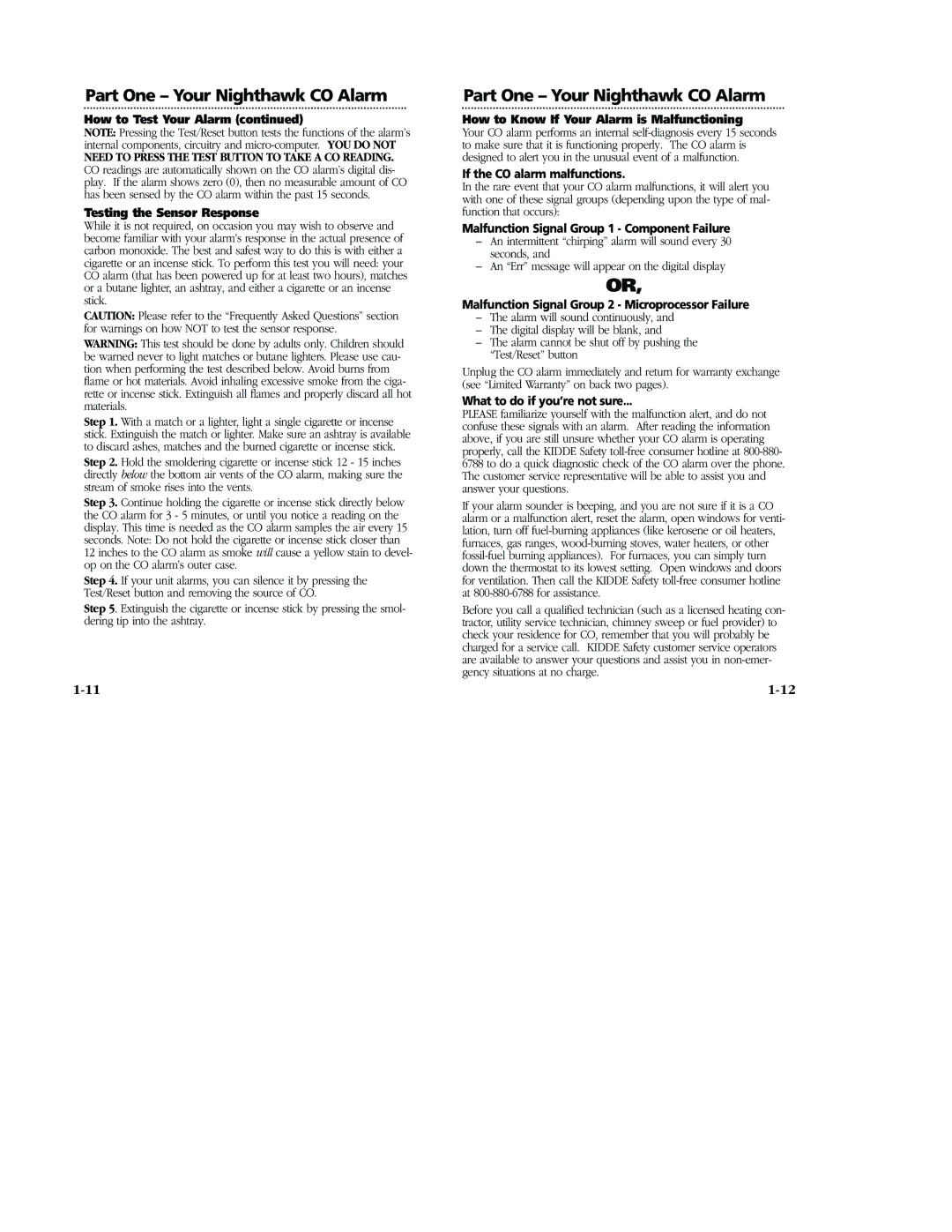KN-COP-HW, KN-COP-DP, KN-COP-C specifications
The Nighthawk KN-COP series, which includes the KN-COP-HW, KN-COP-DP, and KN-COP-C models, represents a significant advancement in the realm of smoke and carbon monoxide detection technology. Designed with user safety and convenience in mind, these models integrate innovative features to ensure reliable performance in residential and commercial spaces.One of the standout characteristics of the KN-COP series is their dual-sensor technology. This feature enhances detection capabilities by incorporating both photoelectric and ionization sensors. The photoelectric sensor is particularly effective in detecting smoldering fires, while the ionization sensor quickly identifies flaming fires. This combination allows the devices to respond accurately to a variety of fire scenarios, thereby increasing overall safety.
The KN-COP-HW model also boasts a sleek, modern design that fits seamlessly into any decor while being functional. It features a voice alarm system that clearly announces the type of danger detected, whether it's smoke or carbon monoxide, ensuring that users can react appropriately without confusion. Additionally, an LCD display provides real-time updates about CO levels, temperature, and battery status.
Another notable feature across the KN-COP lineup is the ease of installation and maintenance. Each unit is equipped with a battery backup, ensuring continuous operation even during power outages. The user-friendly design includes a simple test/silence button, making periodic checks and silencing false alarms hassle-free.
The KN-COP-DP variant elevates safety with advanced connectivity options. This model can be interconnected wirelessly with other Nighthawk units, allowing for synchronized alerts throughout larger spaces. This interconnected network provides comprehensive coverage, ensuring that everyone within the building is alerted in case of a potential emergency.
For users looking for a compact solution, the KN-COP-C model is engineered for optimal performance within smaller spaces. It retains the essential features of its counterparts but in a form factor that is easier to integrate into compact living environments.
Overall, the Nighthawk KN-COP series exemplifies a commitment to quality, safety, and innovative technology. Whether it's the homeowner seeking peace of mind or a business aiming to protect its assets, these detectors serve as a formidable first line of defense against the dual threats of smoke and carbon monoxide, ensuring that safety always comes first.

